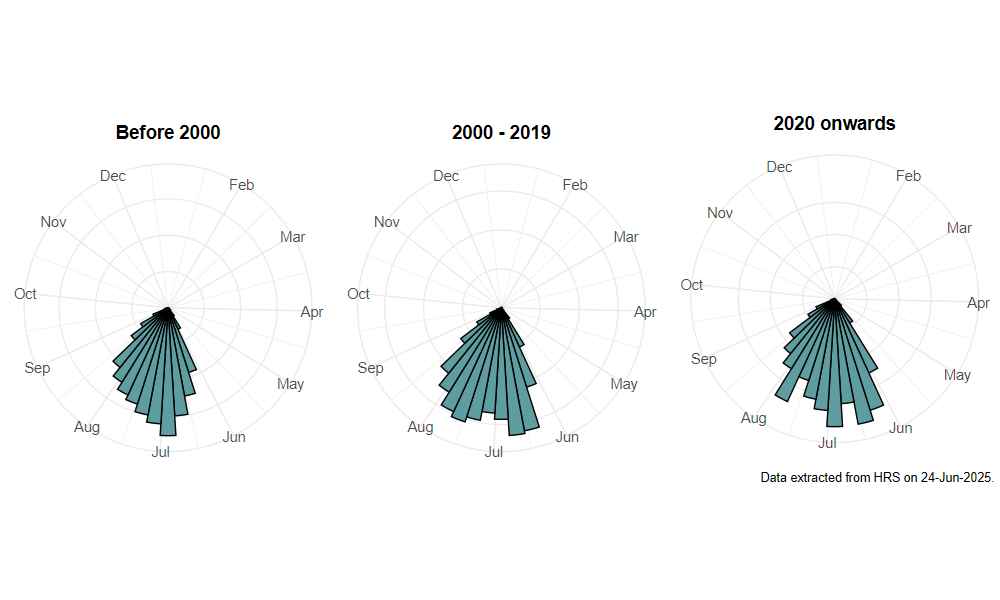Chrysotoxum bicinctum (Linnaeus, 1758)
Identification
Identification difficulty = 1. ![]()
![]() according to Ball & Morris, 20241
according to Ball & Morris, 20241
Biology
This genus is thought to be associated with ants, with larvae feeding on ant-attended root aphids, although a larva of this species has been reared in the laboratory on pea aphids. Adults are usually found in grassy places, often on the edges of woodland or scrub or along hedgerows where they visit a wide range of flowers.
Flight period
The following plots show the number of unique records per week excluding those reported to be of immature stages.

Distribution
Widely distributed throughout Britain but usually encountered in small numbers. It is most widely distributed south of a line between the Ribble and Tees Estuaries whilst more northerly records tend to occur in coastal and lowland situations.

Trends
The following plots show the Frescalo TFactor vs year and a map of the rescaled frequency (all records) for the species.
-
Ball, S., & Morris, R. (2024). Hoverflies of Britain and Ireland. WILDGuides (3rd ed.). Oxford: Princeton University Press. ↩